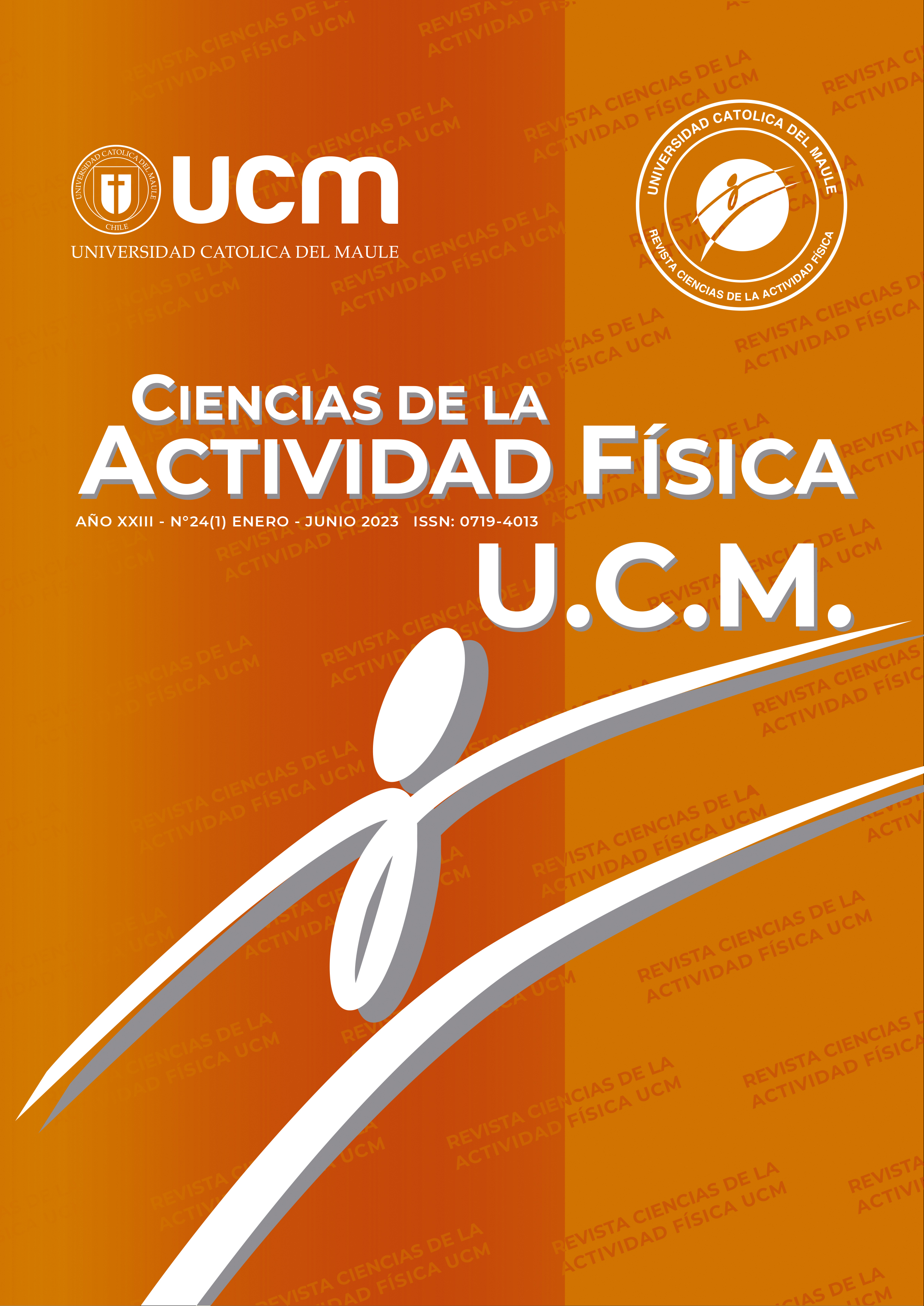Bjerkefors, A., Tarassova, O., Rosén, J. S., Zakaria, P., & Arndt, A. (2018). Three-dimensional kinematic analysis and power output of elite flat-water kayakers. Sports Biomechanics, 17(3), 414-427. https://doi.org/10.1080/14763141.2017.1359330
Bjerkefors, A, Squair, J., Chua, R., Lam, T., Chen, Z., & Carpenter, M. (2015). Assessment of abdominal muscle function in individuals with motor-complete spinal cord injury above T6 in response to transcranial magnetic stimulation. Journal of Rehabilitation Medicine, 47(2), 138–146. https://doi.org/10.2340/16501977-1901
Calvo, J., de Fuentes, M., Torralba, M. A., & Braz, M. (2020). Estudio cinemático de la carrera de 100 m en atletas con discapacidad. Revista Ciencias de la Actividad Física UCM, 21(1), 1–15. https://doi.org/10.29035/rcaf.21.1.8
Carneiro, L. M., & Castro, F. (2009). Cinemática da canoagem: revisão- Canoe kinematics: a review. Mov, 17(3), 114–122. https://portalrevistas.ucb.br/index.php/rbcm/article/view/1034
Comité Paralímpico Internacional. (2021). Paralympic Games - All Editions. https://www.paralympic.org/paralympic-games
Duarte, T., Culver, D. M., Trudel, P., & Milistetd, M. (2017). Desenvolvimento profissional de treinadores paralímpicos:evidências do contexto canadense. In L. R. Galatti, A. J. Scaglia, P. C. Montagner, & R. R. Paes (Eds.), Desenvolvimento de treina`dores e atletas: pedagogia do esporte (1st ed., p. 298). Editora da Unicamp.
Ellis, S., Callaway, A., & Dyer, B. (2017). The influence of lower-limb prostheses technology on Paracanoeing time-trial performance. Disability and Rehabilitation: Assistive Technology, 13(6), 1–7. https://doi.org/10.1080/17483107.2017.1357052
Grigorenko, A., Bjerkefors, A., Rosdahl, H., Hultling, C., Alm, M., & Thorstensson, A. (2004). Sitting balance and effects of kayak training in paraplegics. Journal of Rehabilitation Medicine, 36(3), 110–116. https://doi.org/10.1080/16501970310020401
International Canoe Federation. (2022). Paracanoe Rules. https://www.canoeicf.com/disciplines/paracanoe
Limonta, E., Squadrone, R., Rodano, R., Marzegan, A., Veicsteinas, A., Merati, G., & Sacchi, M. (2010). Tridimensional kinematic analysis on a kayaking simulator: Key factors to successful performance. Sport Sciences for Health, 6(1), 27–34. https://doi.org/10.1007/s11332-010-0093-7
Lok, Y. L. (2013). Biomechanics Study in Sprint Kayaking using Simulator and On-water Measurement Instrumentation: An Overview. 3rd Malaysian Postgraduate Conference (MPC2013), 216-223. https://research.usq.edu.au/download/accb19131dfc4e8ae71b38d4c30c363bc245e9638141a539fe
714d1498d1d66c/12964559/Noor_Rahman_MPC2013_Full%20Proceedings_PV.pdf
Mcdonnell, L. K., Hume, P. A., & Nolte, V. (2012). An observational model for biomechanical assessment of sprint kayaking technique. Sports Biomechanics, 11(4), 507–523. https://doi.org/10.1080/14763141.2012.724701
Mcdonnell, L. K., Hume, P. A., & Nolte, V. (2013). Place time consistency and stroke rates required for success in K1 200-m sprint kayaking elite competition. International Journal of Performance Analysis in Sport, 13(1), 38–50. https://doi.org/10.1080/24748668.2013.11868630
Michael, J. S., Rooney, K. B., & Smith, R. M. (2012). The dynamics of elite paddling on a kayak simulator. Journal of Sports Sciences, 30(7), 661–668. https://doi.org/10.1080/02640414.2012.655303
Michael, J. S., Smith, R., & Rooney, K. B. (2009). Determinants of kayak paddling performance. Sports Biomechanics, 8(2), 167–179. https://doi.org/10.1080/14763140902745019
Norrbrink, C., Lindberg, T., Wahman, K., & Bjerkefors, A. (2012). Effects of an exercise programme on musculoskeletal and neuropathic pain after spinal cord injury—results from a seated double-poling ergometer study. Spinal Cord, 50(6), 457–461. https://doi.org/10.1038/sc.2011.160
Ribeiro Neto, F., Alsamir Tibana, R., Rodrigues Dorneles, J., & Gomes Costa, R. R. (2022). Internal and External Training Workload Quantification in 4 Experienced Paracanoeing Athletes. Journal of Sport Rehabilitation, 31(2), 239–245. https://doi.org/10.1123/jsr.2020-0499
Rosen, J. S., Arndt, A., Nilsson, J., Rosdahl, H., Victoria, L., Bjerkefors, A., Rosen, J. S., Arndt, A., Nilsson, J., Rosdahl, H., & Victoria, L. (2022). Kinematic and kinetic performance variables during paddling among para-kayak athletes with unilateral above or below knee amputation. Sports Biomechanics, 00(00), 1–15. https://doi.org/10.1080/14763141.2022.2067074
Vaquero-Cristóbal, R., Alacid, F., López-Plaza, D., Muyor, J. M., & López-Miñarro, P. A. (2013). Kinematic Variables Evolution During a 200-m Maximum Test in Young Paddlers. Journal of Human Kinetics, 38(2013), 15–22. https://doi.org/10.2478/hukin-2013-0041
Verkhoshansky, Y. (2001). Teoría y Metodología del Entrenamiento Deportivo (1st ed.). Paidotribo.
Wilson, D., & Ramchandani, G. (2017). Home advantage in the Winter Paralympic Games 1976–2014. Sport Sciences for Health, 13(2), 355–363. https://doi.org/10.1007/s11332-017-0365-6


 https://orcid.org/0000-0002-3762-551X
https://orcid.org/0000-0002-3762-551X
